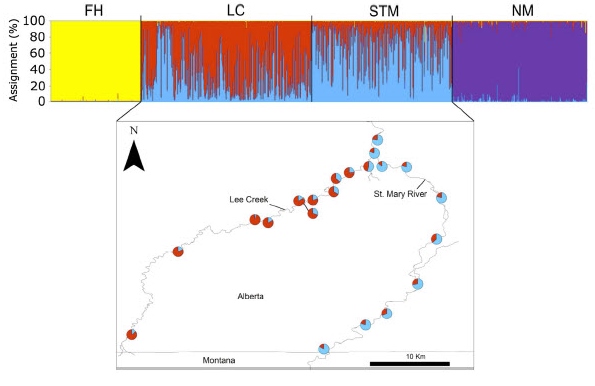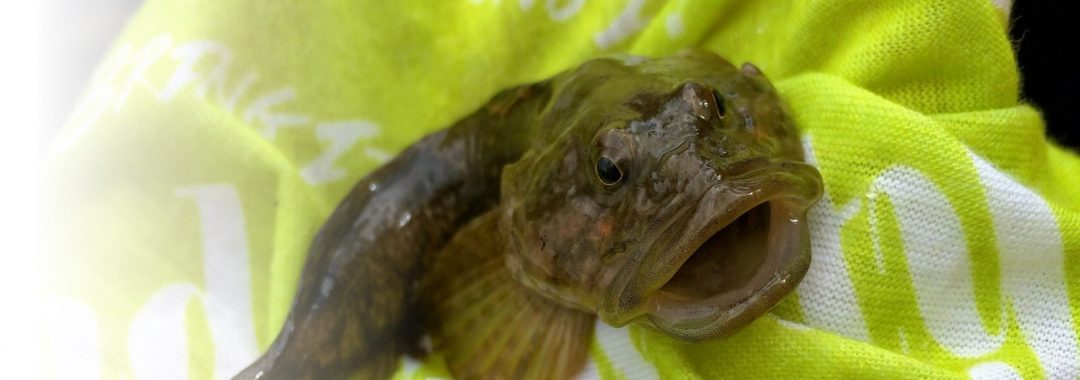Abstract:
Understanding the movement ability and the spatial scale(s) of population genetic structure of species can together better ‘tune’ management objectives to prevent potential range contraction and population declines. We studied the Rocky Mountain Sculpin (Cottus sp.), a threatened species in Canada, to demonstrate the utility of using two complementary approaches to assess connectivity of a species. To do so, we used Passive Integrated Transponder (PIT) tags with a stationary tracking array (n = 223) to track movement and genetic data (n = 1,015) from nine microsatellite loci to assess genetic population structure. The PIT tag results indicated that Rocky Mountain Sculpin are sedentary; approximately 50% of individuals only moved a maximum distance of 10 meters (upstream or downstream) over a 5-month period. Genetic analyses indicated that at the spatial scale of our study area (5500 km2), watershed structure (river basins) is the main geographic feature influencing population genetic structure. We used the Bayesian clustering tool STRUCTURE, which suggested four distinct sub-populations of Rocky Mountain Sculpin in Canada. Genetic structure at finer spatial scales (within basins and sub-basins) appears to be influenced by fluvial distance (i.e., geographic distance along a river) and elevation change between sample locations (i.e., isolation-by-distance and isolation-by-environment). Combining movement and genetic analyses provides complimentary evidence of limited dispersal in Rocky Mountain Sculpin and highlights that both approaches together can provide broader insight into connectivity between populations that may ultimately help to aid future management decisions.
Citation: Ruppert, J.L.W.*, James, P.M.A., Taylor, R., Rudolfsen, T.*, Veillard, M.*, Davis, C., Watkinson, D. and Poesch, M.S. 2017. Riverscape genetic structure of a threatened and dispersal limited freshwater species, the Rocky Mountain Sculpin (Cottus sp.). Conservation Genetics 18: 925-937.
STRUCTURE results showing mean assignment of individuals into four clusters and sorted by geographic locatoins. Geographic locations are abbreviated as FH: Flathead River, LC: Lee Creek, STM: St Mary River and NM: North Milk River.

Also Read:
*Lab members: Jonathan Ruppert, Tyana Rudolfsen, Marie Veillard, Mark Poesch. Check out opportunities in the lab!

